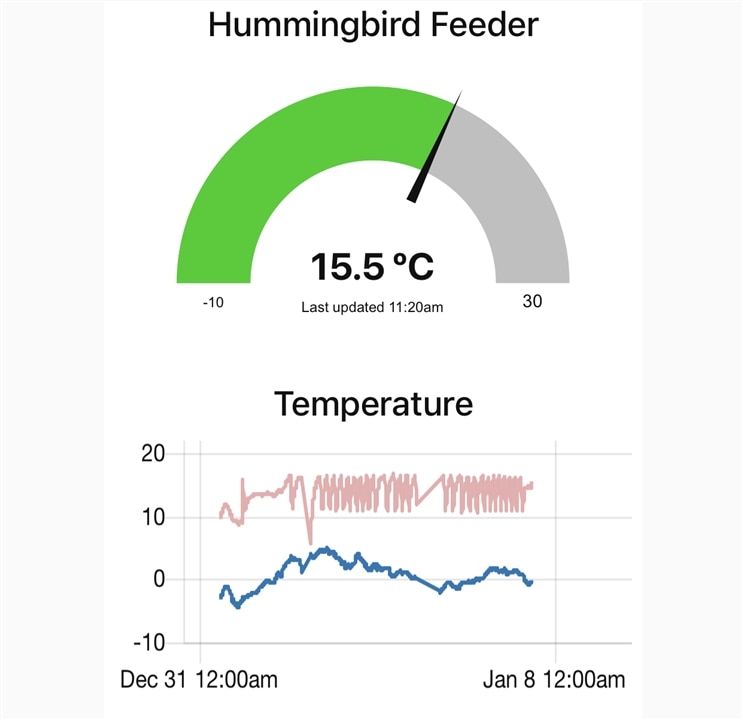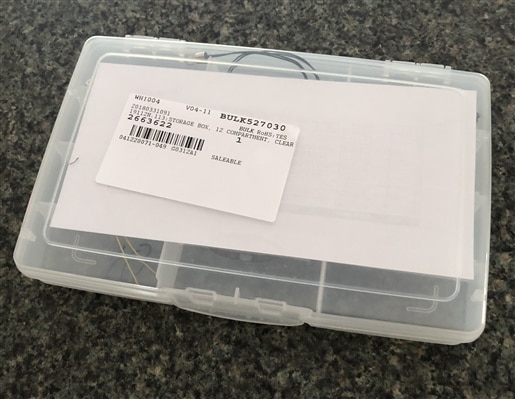Hi all!
I'm ntewinkel, and I've been a software engineer for my entire career. I'm also a hobbyist maker for fun. I love it when I'm able to use my software skills to make things happen "in real life".
I’ve been a member of element14 for over a decade, but I’ve never had much time to participate in challenges like this one. I’ve usually been able to build something fun a few times a year, but now, finally, I have a summer off to participate in a challenge like this one!
For the last several years I’ve been working on an easier way of keeping my hummingbird feeders warm during winter.
I live on Vancouver Island (in BC, Canada), where we have a lot of Anna’s hummingbirds that overwinter and depend on hummingbird feeders to get through the more difficult times of winter.
Most of the winter is mild, and by that I mean “cold but not freezing”; however, we do get snow and freezing temperatures, so it can be a challenge to keep the nectar from freezing at those times. I’ve been using USB-powered hand-warmers, controlled with bi-metal temperature switches, to automatically keep them warm. This generally works well, but the temperature can swing a fair bit.
As I didn’t fully trust the system, I’ve been using WiFi connected temperature sensors to track the feeder temperatures. To my happy surprise, the heating setup actually worked quite well, not only to keep the nectar from freezing, but also to not overheat the nectar.

The blue line in the chart above is the outdoor temperature, and the pink line shows the nectar temperature - the nectar temperature varies a lot, but the thermostat is doing its job for the most part.
During our extreme cold snap last winter it also alerted me that the heater wouldn’t be able to keep up - something I was able to easily rectify by adding extra layers of bubblewrap insulation.
I’ve been using ESP-based boards with digital sensors (including the DHT11, DS18B20, and BME280) for this purpose, but when I saw this challenge I wondered if maybe thermistors could provide me with the temperature tracking that I need, and hopefully also for the temperature control that I want for the USB powered heater. Thermistors are a fraction of the price of the other sensors, and they are also much smaller.
Here is a picture showing how my current temperature sensor probe was set up - the glass feeder bottle gets covered with insulation so that the temperature sensor gets an approximate reading of the nectar temperature.
During the summer, I've kept the BME sensor running as an easy way to track the weather near my house.
For this challenge, element14 and Molex provided me with a kit of thermistors of various values, so that I can do some testing and exploring... some might say experimenting! with them.
My plan is to connect the thermistors provided in the kit for this challenge to my ESP8266 based Wemos D1 mini microcontrollers to track temperature data of a bottle of water that will be kept outside, tracking temperatures over the course of a few days or maybe weeks.
To be honest, I have a fair bit to learn about thermistors - before this challenge I had not really considered them, and I had no idea there were this many types! The kit contains 10 thermistors, so my first task will be to figure out why the world needs so many different types!
The first part of the experimenting will be to see what the difference is between the various different thermistors provided in the kit: will all of them work with my micro controller? Does accuracy vary across the range? Does the accuracy matter for my use cases? Will they work for my ideal temperature tracking range (-20C to +40C) ? Will they work in outdoor, potentially wet, environments? Will they work well for my specific purpose of tracking liquid temperature inside a glass bottle?
My goal for this challenge will be for me to learn more about thermistors, sharing what I learn along the way, and to determine if thermistors are a good option for my hummingbird feeder temperature control and monitoring project.
My ultimate Long-term goal is to create an easily-reproducible hummingbird feeder heater / monitoring system that is reliable yet inexpensive to build for anyone else wanting to do the same for their hummingbirds.
I also hope that I’m able to share with and learn from all of the other participants in this challenge.
I invite you to stay tuned, follow along, and hopefully we can all learn a few things along the way :)

